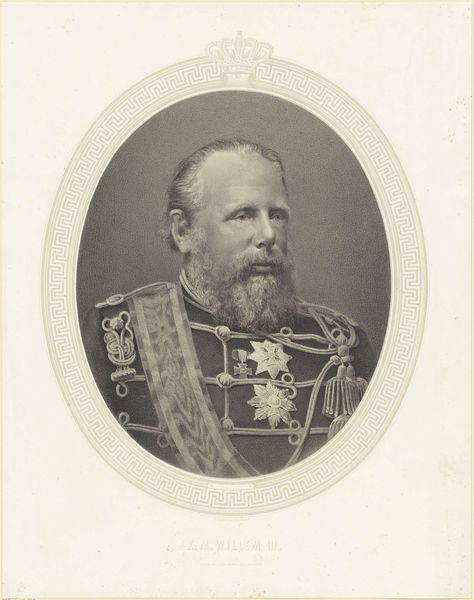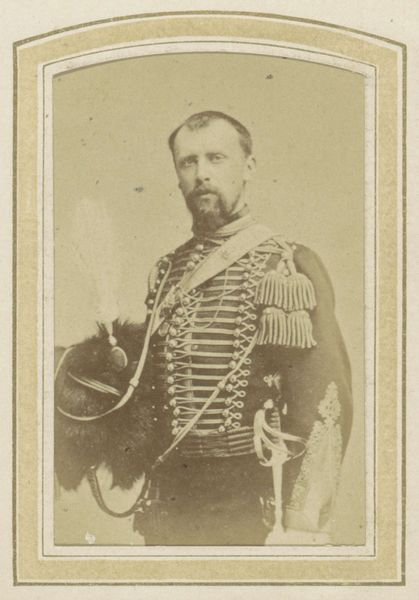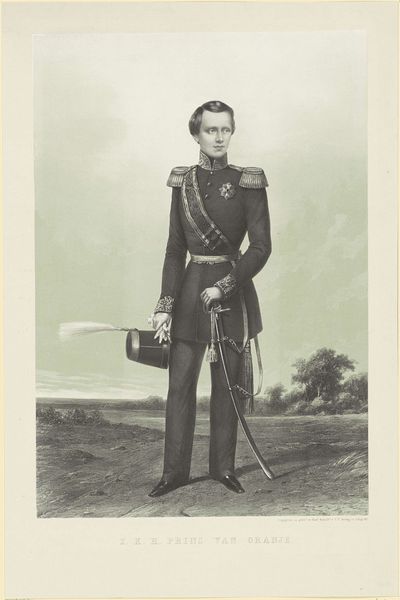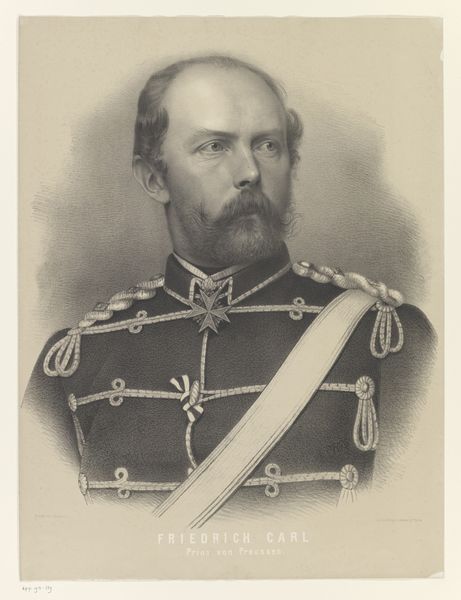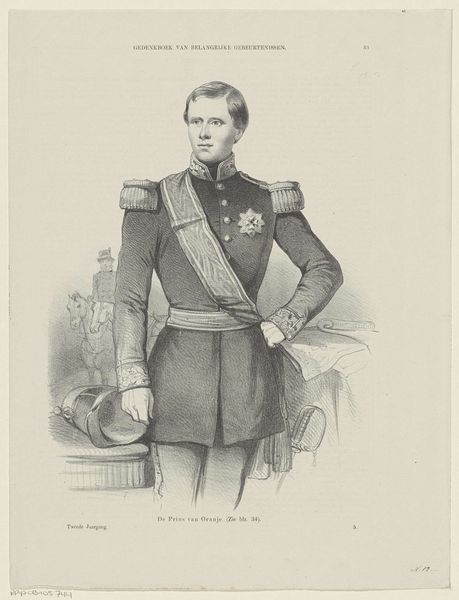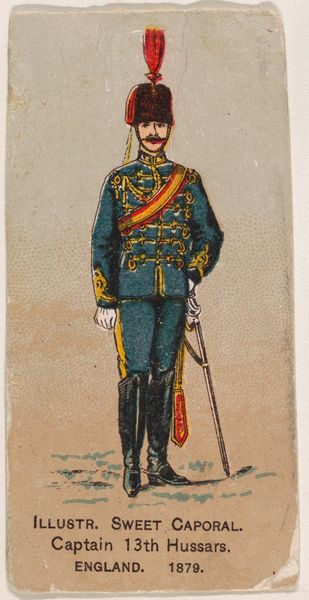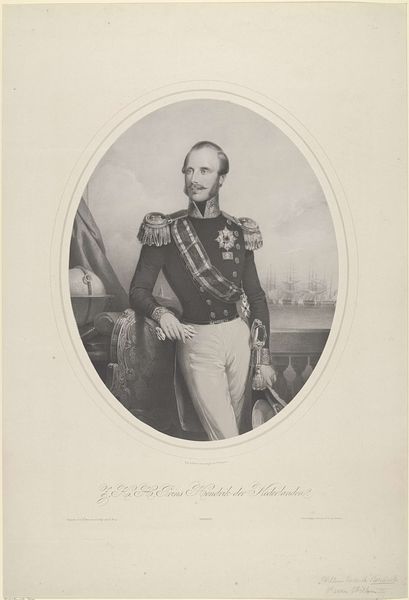
Dimensions: height 679 mm, width 502 mm
Copyright: Rijks Museum: Open Domain
Curator: This is an intriguing print titled "Portret van Willem III, koning der Nederlanden," created sometime between 1849 and 1899 by an anonymous artist, housed here at the Rijksmuseum. Editor: It strikes me as simultaneously imposing and quite… reserved. The ornate frame clashes a little with the relative plainness of the portrait itself, doesn't it? Curator: In considering the overall composition, one finds a strategic use of the oval frame, serving to contain and focus the viewer’s attention on the figure of King Willem III. The detail, though limited, is strategically placed on the face, uniform and ornamentation. Note how that crown rests atop it all like a visual summary of sovereign power. Editor: I find myself thinking more about the physical production. As a print, this image would have been relatively easily reproducible, enabling its wider dissemination among the populace. How interesting to consider its function as both royal portraiture and potentially, a form of early political merchandise, wouldn't you say? What layers of skill went into transferring the painterly, the traditionally unique object, to something accessible and mass produced? Curator: Precisely! It certainly elevates the symbolic weight. Consider the color palette – muted earth tones with strategically placed, high-contrast elements such as the medals and sash. These focus our attention and contribute to the portrait’s formal, academic quality. Editor: The materiality also highlights the performative aspects of kingship – the constructed nature of royal identity. It’s all buttons, braid and meticulously arranged accessories. And what did those accessories cost? What work went into them? I wonder about the hands that made those objects. Curator: A vital observation. Overall, this print offers a lens to consider not only the aesthetic strategies of portraiture but also broader themes of power, representation, and early mass media. Editor: It certainly makes you think about who had access, and for whom it would resonate beyond the surface of "historical photography." It really becomes something quite special, doesn't it?
Comments
No comments
Be the first to comment and join the conversation on the ultimate creative platform.



